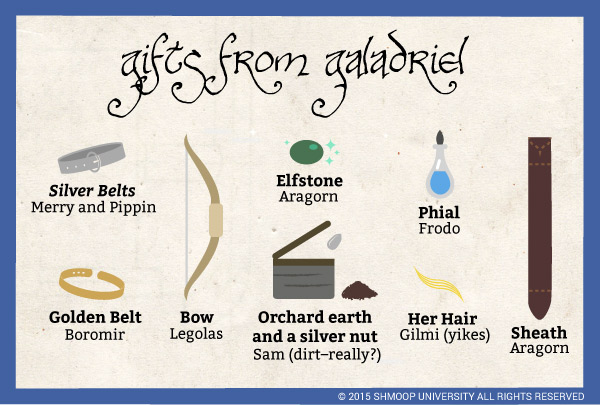Symbolism, Imagery, Allegory
When Bilbo makes up a song about Eärendil to sing in Rivendell, Aragorn insists that he put in something about a green stone. Aragorn also finds a green stone on their travels to the Ford of Bruinen, as a sign that Glorfindel the Elf has been by this road and is looking for Aragorn. When the Fellowship passes through Lothlórien, Galadriel hands Aragorn a silver brooch with a green stone set into it, a gift from Arwen as a token of her love. So – what is it with all of these green stones?

(Click the infographic to download.)
Green stones are called "Elfstones" in the novels, so there is an association between these jewels and the Elves. But beyond that generic symbolism of Elfishness, the green stones also seem to represent Aragorn himself. When Galadriel presents Aragorn with her granddaughter's brooch, she tells him, "In this hour take the name that was foretold for you, Elessar, the Elfstone of the house of Elendil!" (2.6.60). So whenever a green stone comes up in the series, we think of Aragorn, a.k.a. the Elfstone.
(Spoiler alert!) Indeed, Elfstone becomes Aragorn's official name as King of Gondor: he is the first King Elessar (which means "Elfstone" in Elvish). When Aragorn says farewell to Galadriel, Celeborn, and Elrond in the final volume of the series, he holds up his green stone, "and there came a green fire from his hand" (The Return of the King [6.6.76]). Here, the green stone represents both Aragorn and the bond that he shares with the Elves; after all, Aragorn and Elves go together like peanut butter and jelly.